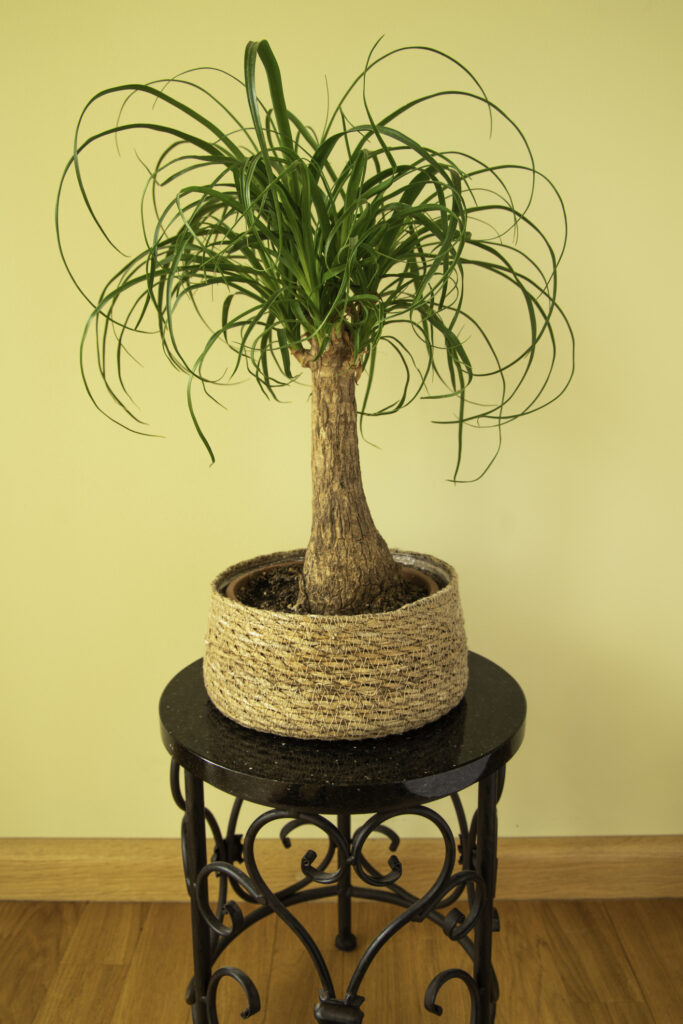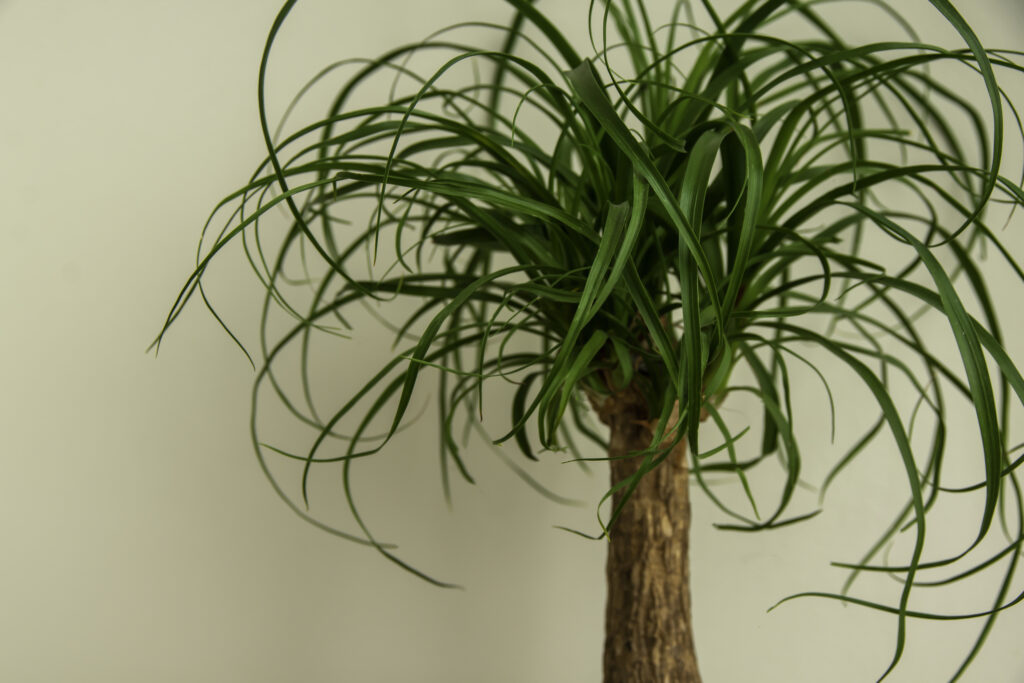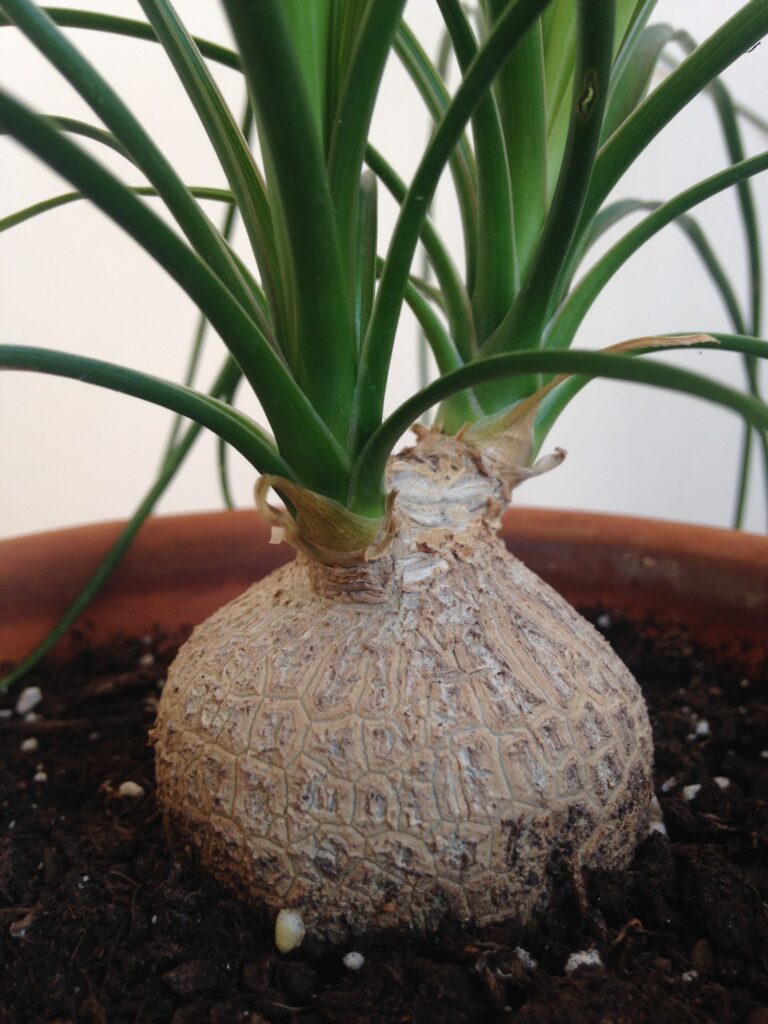Tips for Growing Ponytail Palm
With its fabulous updo resembling a foliar ponytail, Ponytail Palm makes a fun, eye-catching addition to any indoor garden. This tropical, succulent tree is also super easy to grow as a houseplant.
Despite its common name, Ponytail Palm isn’t a palm, notes Justin Hancock, Senior Brand Marketing Manager, Costa Farms. One of the largest horticultural growers in the world, Costa Farms grows more than 1,500 varieties of houseplants, including Ponytail Palm.
About Ponytail Palm
“Ponytail Palm’s botanical name is Beaucarnea recurvata (or Nolina recurvata),” says Hancock. “The plant is more closely related to Agave, Liriope and Dracaena than true palms.”
Ponytail palm gets its palm designation from its palm tree-like look and the fact that its native range is in areas of Central America, which are often associated with tropical plants like palm trees. In its native habitat, the Ponytail plant flowers.
Beaucarnea recurvata is a succulent. The plant has a distinctive, attractive swollen trunk known as a caudex that stores water. In its native habitat, the plant relies on water stored in the caudex during times of drought and in between rainfall.
This means that Beaucarnea recurvata is also drought tolerant in your indoor garden. If you’re the type of indoor gardener who forgets to water, you and Ponytail Palm will get along nicely. Just make sure not to overwater the plant, as it’s susceptible to root rot.

Ponytail Palm Height Indoors
“Outdoors in the tropics, Ponytail Palm height can reach more than 15 feet tall, but with the reduced light and other challenges it faces as a houseplant, it stays much smaller—usually 3-4 feet,” says Hancock. “Give the plant good Ponytail Palm tree care and decades of growth, however, and it’s possible that the plant will grow larger.”
According to Hancock, many plant parents appreciate Beaucarnea recurvata’s slow-growing nature. “The plant doesn’t require pruning, so you don’t need to worry about it growing out of bounds, and you hardly have to worry about it outgrowing its space on your desk or tabletop,” he says.
Tips for Growing Ponytail Plant Indoors

Beaucarnea recurvata care is easy once you know the basics. Keep the following growing tips in mind, and you’ll enjoy a healthy, happy Ponytail Palm tree in your indoor garden for years to come.
Ponytail palm is a long-lived houseplant that you’ll likely be able to hand down to the next generation, providing you take good care of the plant.
Here are the most important things to know regarding growing Beaucarnea recurvata indoors.
Ponytail Palm Lighting
Beaucarnea recurvata thrives in bright to medium-bright light indoors but can take lower light levels. For best results, locate the plant 3 feet from large, unobstructed, south- or west-facing windows, or within a foot of an east-facing window. If you only have northern exposure windows, Ponytail Palm also does well under full-spectrum lighting.
Ponytail Palm Watering
“Ponytail Palm’s most appreciated attribute as a houseplant is its ability to go long periods in between waterings if it has to,” says Hancock. “Like many cacti and succulents, it may survive a month without being watered if it has to (depending on growing conditions, of course!)”
Avoid overwatering the tropical succulent, as it is susceptible to root rot. Water when the top half of the soil in the pot has dried out. Use a moisture meter to check for watering readiness and water when the meter registers on the 3.
“How much and how often Ponytail Palm watering is required depends on your indoor growing conditions,” says Hancock. “The more light the plant gets and the warmer the temperatures, the more water it will use. If you’re unsure about watering, it’s far better to keep your Ponytail plant a bit too dry than to leave it too wet for extended periods.”
Ponytail Palm Fertilizing

In addition to storing water in the caudex, Beaucarnea recurvata holds onto nutrients there, as well. This means that it’s best to not overfeed the plant.
Fertilize Ponytail Palm once in early spring, midspring and again in midsummer with a well-balanced, organic fertilizer. Organic fertilizers are lower in salts than chemical fertilizers, which will result in less chance of leaf-tip burn, which Ponytail Palms are susceptible to.
If your Beaucarnea recurvata experiences leaf tip burn, pull back on fertilizing. It’s also a good idea to leach the soil to rinse out salts, which cause the tip burn. Here’s a video that shows you how.
If you haven’t been overfeeding your plant, leaf-tip burn can also be caused by insufficient watering or very low humidity.
Ensure you are watering correctly, and provide additional humidity if your humidity level is below 35 percent.
Repotting Ponytail Palm
Because Ponytail palm is a slow-grower, it doesn’t need repotting that often. You want to repot when the plant has outgrown its existing pot. When you water, water will rush through the pot, and the container will have filled with roots. The top of the plant will also have grown substantially.
The Ponytail Palm pot size you choose matters. Go up just one pot size. Avoid potting the plant up into too big of a pot, as the excess soil in the pot will cause the plant to develop root rot. When you repot, you want a 2/3 plant to 1/3 pot ratio. Check out this short video for a quick explanation.
Ponytail Pests and Diseases
Be on the lookout for mealybugs, scale insects and spider mites. Treat with neem oil and deter further spider mite infestations by misting the foliage, as spider mites thrive in dry conditions.
Take Good Care of Your Ponytail Plant
“Despite it being a common houseplant grown around the world, Ponytail Palm has been listed as endangered for risk of extinction in its native habitat,” says Hancock. “The plant also produces a somewhat attractive floral display if happy (though this rarely happens indoors unless it gets a ton of light), and if pollinated, produces seed (which is how many growers propagate Ponytail Palm).”





